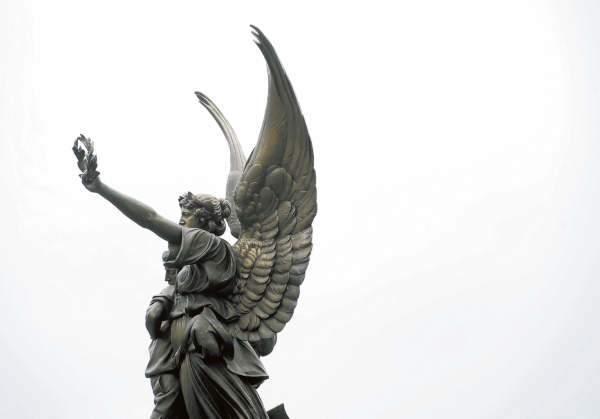Elizabeth Cook: ‘Fame’ reaches another impasse
Published 6:18 am Sunday, October 1, 2017

- The Confederate Memorial statue of 'Fame,' depicting a winged figure holding a fallen soldier, was dedicated in 1909 by the Hoke Chapter of the United Daughters of the Confederacy. Jon C. Lakey, Salisbury Post.
Salisbury’s Confederate monument means different things to different people, and talking people out of those perceptions is as likely as convincing the Yadkin River to reverse course.
The monument issue erupts every so often, and this is one of those moments. A group called Salisbury Indivisible has asked the city to work toward the statue’s removal to a less public location.
“Taking action to relocate ‘Fame’ will demonstrate that Salisbury is a forward-looking city invested in diversity and respecting the sensibilities of all its residents,” the group’s letter says.
The city manager issued a statement Friday saying the privately owned statue sits on public property and therefore cannot be moved without the approval of the state and the consent of the United Daughters of the Confederacy.
Meanwhile, a change.org petition calling for the statue to stay in its spot at Innes and Church streets had gathered about 2,500 online signatures as of Saturday.
We appear headed to another impasse, one we will hit our heads against over and over until we finally deal with the unfinished business of the Civil War— finding a way to honor the Confederate dead and, at the same time, acknowledge the utter evil of slavery.
Salisbury appears prominently in an early chapter of “Confederates in the Attic: Dispatches from the Unfinished Civil War, a 1999 book by Tony Horwitz.
During a visit to Salisbury, the Pulitizer Prize-winning journalist went to the National Cemetery, where thousands of Union war dead are buried in trenches.
Cemetery caretaker Abe Stice, a native of Oklahoma, shared this about Salisbury with Horwitz: “In school I remember learning that the Civil War ended a long time ago. Folks here don’t always see it that way. They think it’s still half-time.”
Indeed. There are still open wounds in some people’s hearts over the South’s loss to the North — or the idea that the war might be forgotten. The pain is exacerbated by demographic changes and cultural shifts that are dramatically reshaping our country.
Slavery has left even deeper scars — scars that descendants are no longer willing to overlook or hide. The Africans who were shipped into this nation and sold like chattel suffered horrendous treatment, and memorializing the war without acknowledging that sin feels like a sanction of their abuse.
The first time in recent history that controversy arose over Salisbury’s Confederate monument was in 1996, when African-American attorney Michael King called a rally in front of it.
King wanted people to come together in the name of racial consciousness and brotherhood. But he had raised questions about the monument at a Salisbury City Council meeting. Reaction in letters to the editor of the Salisbury Post was swift and adamant: Do not move the statue.
When King stood atop a flatbed trailer to speak at the rally that February day, he faced a crowd of about 50, far fewer than he’d hoped.
People told King they couldn’t come because they had other obligations. Or they gave another reason.
“They told me they have to keep peace with the white folk,” King said.
Interesting differences surface when people talk about the monument, a seemingly blank slate onto which people project their ideals. They’ll say it memorializes all soldiers, black and white, North and South, or even soldiers of all wars — “a symbol for all,” as one online commenter said.
Another commenter was having none of that. “This monument is to Confederate soldiers, not all. This was erected for my ancestors, not every soldier from all wars.”
The black community also lacks one unanimous view. Some see it as a deeply disturbing reminder of their ancestors’ oppression; others feel less strongly. And some, as King said, just want to keep peace — but that’s getting harder and harder.
Right now, like it or not, the monument stands for division in our community. Could it somehow bring us together?
Horwitz commented on the fate of Confederate monuments in an interview earlier this year.
“It’s for every community to decide,” Horwitz said, “but I think there’s an argument to be made that rather than tear these monuments down and sweep this history under the carpet that we need to remember it and reinterpret, contextualize, to explain the mindset that created these monuments on the question of history.”
Clearly, there’s much we have yet to fully understand.
Elizabeth Cook is editor of the Salisbury Post.

